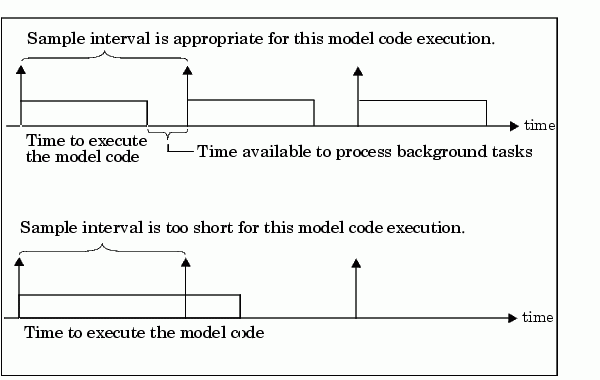

| Real-Time Workshop |   |
Program Timing
Real-time programs require careful timing of the task invocations (either via an interrupt or a real-time operating system tasking primitive) to ensure that the model code executes to completion before another task invocation occurs. This includes time to read and write data to and from external hardware.
The following diagram illustrates interrupt timing.

The sample interval must be long enough to allow model code execution between task invocations.
In the figure above, the time between two adjacent vertical arrows is the sample interval. The empty boxes in the upper diagram show an example of a program that can complete one step within the interval and still allow time for the background task. The gray box in the lower diagram indicates what happens if the sample interval is too short. Another task invocation occurs before the task is complete. Such timing results in an execution error.
Note also that, if Real-Time program is designed to run forever (i.e., the final time is 0 or infinite so the while loop never exits), then the shutdown code never executes.
 | Model Execution | Program Execution |  |